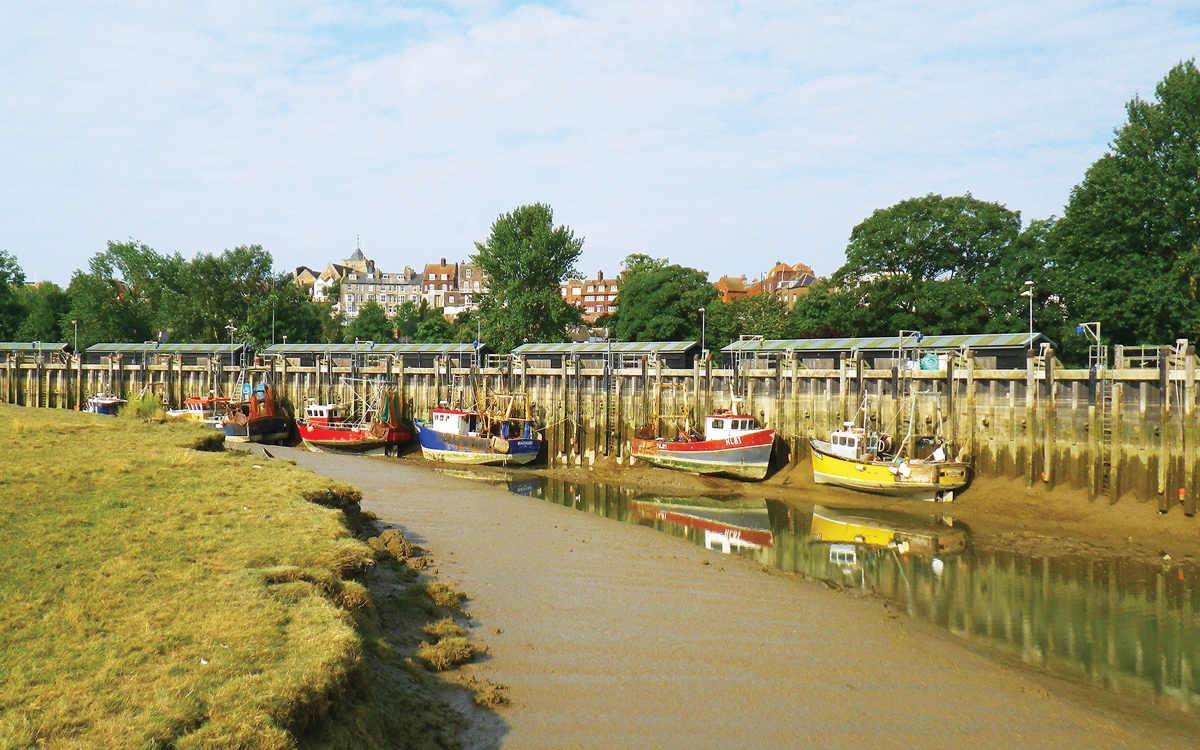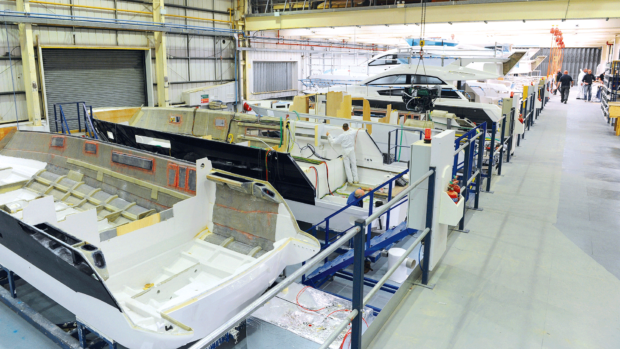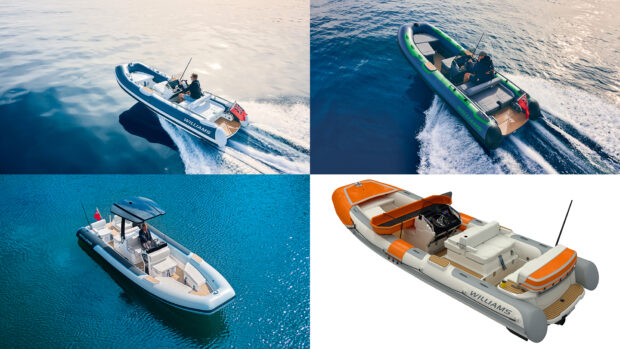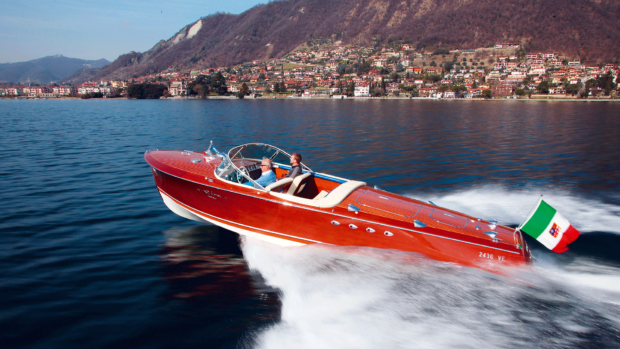This part of our coastline is steeped in nautical history and dotted with bustling ports and intriguing rivers – so why is it frequently overlooked? Peter Cumberlidge explains why the passage east from Selsey is such a rich cruising ground
The very English coastline between Selsey Bill and North Foreland has many familiar names and famous headlands, yet few of us get round to cruising here. Perhaps it feels too ‘home waters’ for Solent boats, who tend to head west or south, while we in the West Country know little of life beyond Chichester.
Yet the Channel coasts of Sussex and Kent are steeped in nautical history and some of the harbours retain their attractive working characters. Littlehampton still has its riverside hards and wharves, and Shoreham bustles with coasters.
Newhaven is a slightly scruffy yet pleasantly salty time warp with cross-Channel vibes. East of Beachy Head, Eastbourne is a handy bolthole before you pass Pevensey Bay, where William the Conqueror was borne ashore. You can’t miss Hastings pier and further east Rye Bay curves in towards the narrow tidal entrance to Rye harbour and the River Rother, a picturesque curiosity well worth visiting at high water.

The tidal entrance to Rye Harbour and the River Rother
Dungeness has a classic passage anchorage and is an amazing place to wander – low and desolate, its two huge power stations dwarfing the 140ft lighthouse. Best known as a ferry port – and now a Chunnel terminal – Folkestone has a small drying harbour and you should look in here to savour the atmosphere. This once stylish resort has a romantic history as the terminus for the London boat train.
Dover is a snug stopover and the legendary Downs anchorage was used by ships of all nations in the days of sail, waiting for weather or a fair tide. Ramsgate marina is a strategic billet and tiny Broadstairs harbour is the last before North Foreland and the Thames Estuary.
Article continues below…

The ultimate guide to cruising the West Country
The West Country is packed with enticing boating spots and hidden gems. In this feature Peter Cumberlidge picks the best

Crossing the English Channel by boat: Everything you need to know
All in all, this ‘secret’ south coast is a fascinating cruising area and a particular treat for anyone nostalgic about unreconstructed England. A week of pottering along here will transport you back 30 years.
Around Selsey Bill
Passing the low promontory of Selsey Bill is always a touch eerie. Rocky shoals extend six miles out and the land is sometimes invisible in the summer haze. The narrow Looe channel runs between the inner dangers and outer banks, a short-ut in daylight and reasonable weather. If you feel unsure, stay outside the Owers south-cardinal buoy in clear water.
Littlehampton
Littlehampton is the first haven after Selsey, a working port on the River Arun from Roman times. The approaches and river mouth dry at low water, so for a first visit approach an hour before high water, passing between two long training walls and then Littlehampton pier. To port lies green open common before you reach the drying pontoons of the yacht club.

The peaceful River Arun at Littlehampton
Most visitors berth at the town quay, 500m up on the starboard hand, with about two metres minimum depth. Littlehampton is visitor-friendly and the harbour master, Billy Johnson, is a jolly ambassador for this sociable hideaway.
Sizeable ships bring in road stone chippings to a wharf above an opening footbridge. I enjoy watching them coming and going, but listen on VHF 71 when entering or leaving. A ship leaves no room for a yacht to squeeze past! There are also fishing boats and anglers, so always plenty of animation. Littlehampton Marina is above the bridge to port, with minimum depths up to 2.5m.
Shoreham
I have sometimes put into unassuming Shoreham in preference to Brighton. You lock into Lady Bee Marina, a well-kept Channel secret. Unlike Littlehampton, Shoreham is accessible at any tide. You enter between two jutting piers and soon hang a right into the ‘east arm’ and head towards some locks, which operate 24/7 during the season. Call the lock-keeper on VHF Ch 14.

Shoreham harbour is accessible at any tide
Lady Bee Marina is inside the locks to port. There’s limited space for visitors, but the lock-keepers and the marina do their best to fit you in. The surroundings aren’t inspiring, with wharves opposite the pontoons, but this basin is snug in any weather and has a certain charm. The Schooner Inn is almost a clubhouse and you’ll eat well here at moderate cost.
For a leisurely lunch or an evening out, I recommend a short taxi ride to discover Into the Blue. This accomplished seafood bistro is in Ferry Road, between the Adur River and Shoreham beach. The suburban aspect doesn’t look promising, but press on Into the Blue for some of the finest fish and shellfish on the south coast. This light and airy diner has a stylish conservatory adorned with bright artwork. The lively theatre kitchen keeps you entertained.
Brighton and Newhaven
Six miles east of Shoreham, Brighton Marina is a comfortable passage stop, though to me it feels rather soulless. I prefer Newhaven, six miles further east, which although ramshackle has the vibes of a normal port. Coasters, fishing boats, tugs, dredgers and cross-channel ferries to Dieppe all add interest.

A stroll along iconic Brighton pier is a must when visiting the city
Newhaven entrance feels very English. White cliffs set the scene and behind the coast are the rolling South Downs. The outer breakwater curves out on the west side and you enter between two tempting beaches. The marina on the west side is pleasantly low-key with playing grounds and woodland behind it, but the east side of the harbour is quite industrial.
On the west side of the entrance, the fort is worth a look, built in 1871 and active throughout World War 2. Its tunnels and gun-turrets kept me engrossed for hours, and there are fine views south-east towards Beachy Head. Next to the fort, the Hope Inn serves up superb fish and chips.
A couple of hours before high water, why not take the dinghy up the river beyond town and out into open Sussex countryside? In principle you can venture the seven miles up to Lewes, where there’s a quay on the east bank.
Around Beachy Head
Perhaps the most distinctive Channel headland, Beachy Head is a sheer chalk cliff rising to 531ft near its red-and-white lighthouse. Because the headland catches cloud and mist, the lighthouse
was built down on the beach instead of high on the cliff.

White cliffs loom impressively over Beachy Head lighthouse
This traditionally shaped tower is an extraordinary sight as you cruise past, standing far below the clifftop. It had three resident keepers until 1983 and an LED light was installed in 2011. To me the LED is a dismal ‘improvement’ because now there is no majestic double sweep of the light reflected against the white cliffs!
Eastbourne Sovereign harbour
While I can never work up much enthusiasm for Eastbourne’s extensive marina complex, it has often been a welcome port-of-call during a long haul to or from the Dover Strait. The approaches are shallow at low springs, so two hours’ rise of tide is best for going in.
Beyond the pierheads you follow a buoyed channel to a lock leading to the inner harbour. The marina is lined with garish apartments, but everyone is helpful and friendly. There are plenty of eateries and my current favourite is Thai Marina, facing the inner basin.
Pevensey Bay to Rye
Cruising east from Eastbourne you soon pass Pevensey Bay, an old-fashioned fishing village with boats drawn up on the shingle and rows of wooden groynes catching the light.

Follow in William the Conqueror’s wake at Pevensey Bay
A Martello tower dates from Napoleonic times, when this stretch of coast was vulnerable to invasion. Hastings Pier is a flamboyant creation with a Christmas cake surfeit of golden domes. It was impeccably restored to its former glory after being damaged by fire in 2010. Ten miles east of Hastings you reach the tidal entrance to Rye harbour and the River Rother, one of the least-known but most intriguing havens on the Channel coast.
The moody River Rother
The river approaches seem impenetrable on the chart, drying half-a-mile out from the pierheads, but in quiet or offshore weather it’s safe to enter two hours before high water. Because the river has nowhere to stay afloat, you should only visit on the top of the tide, but if you’ve never been in before, give it a go.
The two breakwaters have wide beaches on either side and then you pass a black shack with a bright red roof. The flat terrain looks forlorn in gloomy weather, but in sunshine the wild fens feel spacious and invigorating.

Timing is everything on the River Rother as it rapidly drains dry at low tide
Further up you can moor for a while alongside timber piling and wander ashore to explore. Don’t linger though. Two hours after high water you should be heading back to sea before the river empties like a bath.
Around Dungeness
This low-crouching promontory is strange and spooky, its two nuclear power stations looming over the lighthouse and the fishing boats winched up on the beach. From seaward all you see are the power stations, resembling some vast ship aground on the south tip of Kent. The ‘new’ and old lighthouses appear next and the shingle flats lift at the last moment.
The east side of Dungeness has been a passage anchorage since the days of sail and I’ve anchored here in westerly weather. With the hook safely dug in you can dinghy ashore and climb up the steep beach past the fishing boats.

Fishing boats drawn up on the shingle: a typical Dungeness scene
The present lighthouse has black-and-white bands and looks oddly futuristic, almost space age amidst all the paraphernalia of nets and crab pots. The original black lighthouse is a historic listed building and more classically curved.
You can visit this 115-year-old tower and climb to the light chamber for breathtaking views east along the Kent coast or west towards Hastings. With a decent pair of marine binoculars you can also watch the Channel shipping ploughing remorselessly to and from the Dover Strait. The Dungeness elephants in the room – the ‘A’ and ‘B’ power stations – simply look chilling. Inland, much of the headland is a nature reserve.
Smugglers galore
Cruising north-east from Dungeness you pass Lydd-on-Sea, a timeless bungalow seaside town, and then lonely Romney Marsh – once serious bandit country and a natural target for smugglers. During the Napoleonic Wars, the demand for cheap brandy and tobacco was an irresistible market force; so French cutters would steal inshore at dusk and land their precious cargoes at the dead of night when their English receivers signalled the all clear.

Dungeness’s statuesque old lighthouse
Because this whole stretch of coast was so vulnerable to invaders (the French again, basically) the Royal Military Canal was built during the early 19th century between Seabrook near Folkestone and the River Rother near Rye.
Unconnected to the sea, this canal was never intended as a navigable waterway but a 30ft wide, 10ft deep defensive moat – an optimistic measure against armies that had successfully crossed the Rhine and Danube. Before World War 2, 130 years later, the canal was again fortified as a deterrent and pillboxes were built as lookouts. Now it is a tranquil escape for walkers, cyclists and twitchers.
Folkestone harbour
As you cruise east from Romney, Folkestone breakwater appears ahead, the remnant of a totally different kind of history. Folkestone was a ferry port from 1843, when the steam packet Water Witch shuttled across to Boulogne. Passengers arrived by train from London Victoria, and Folkestone became a stylish terminal for continental travel.

Colourful beach huts – a reminder of Folkestone’s bygone glamour
Pampering hotels catered for wealthy travellers, many bound south to the Riviera on the Train Bleu sleeper from Paris. Hercule Poirot would undoubtedly have stayed at Folkestone’s Grand Hotel before making the dreaded Channel crossing. Sadly, the Folkestone ferries stopped in 2001 as the more mundane tunnel took up the story.
Although Folkestone harbour dries, it’s worth nudging in near high water just for a look-see. The packet ships and opulence have long gone and Folkestone’s Train Bleu heydays take some imagining. However, a mile west along the promenade, the Grand is still an excellent retreat before boarding the Eurotunnel.
Dover Marina
Five miles east of Folkestone, Dover’s enormous harbour is hemmed around by breakwaters with east and west entrance gaps controlled by traffic lights. This is England’s busiest port for ship movements and you must obtain permission to enter.

You’ll need permission to enter Dover Harbour – England’s busiest port
Call Dover Port Control on VHF Ch 74 when two miles away and then follow their instructions rigorously. Dover Marina is on the west side of the harbour and useful whether you are crossing the Channel or heading east for the Thames Estuary.
The marina isn’t exactly ornamental, but it’s extremely welcoming and in the right place! You can eat well too if you know where to look. Il Rustico is my Dover choice, a 15-minute amble from the marina behind the A20. Francesco Pasquino presides over this temple of Italian family cooking with a Sardinian twist.
Around South Foreland
To me, Dover feels more foreign than Calais just across the water. Those spectacular white cliffs never seem quite real, as if they were some kind of English PR stunt. Somehow it smacks of frontier flashiness, but Dover Castle is impressive, a grand 12th century fortress known locally as the gateway to England.
Leaving Dover to round South Foreland, you soon reach Deal, a pretty town with a solid, unadorned pier. Deal has a long maritime history because The Downs roadstead opposite was a strategic anchorage in the days of sail, packed with ships waiting for a fair tide or wind up or down-Channel. Royal Naval ships lay here, poised to work westward to Portsmouth or Plymouth, or round North Foreland to Chatham or the Pool of London.
Deal boatmen
The notorious Deal ‘hovellers’ sailed easily handled luggers and were commercially flexible about their trades. Hovellers ferried crews to and from their ships and acted as unlicensed pilots, sometimes wreckers and frequently smugglers.

Smuggling folklore gives Deal added intrigue
The Navy built a storehouse and victualling yard at Deal and all supplies had to be ferried out from the beach. The Goodwin Sands, lurking four miles offshore, provided shelter from Channel swell, but also lucrative wrecking opportunities for adaptable local boatmen!
Ramsgate
Cruising north from Deal you can stay inside the Goodwin Sands to reach Ramsgate, another perfectly positioned staging post in a more elegant setting than Dover. Ramsgate’s Royal Harbour is available at any tide, but for the approach you should keep to the ‘yacht tracks’ shown in almanacs and pilot books.
Once through the pierheads, you can make straight for either the west or east marinas, while the Inner Harbour is inside a sill and lifting bridge, which opens on demand two hours each side of high water.

Ramsgate’s inner harbour is accessible via a sill and lifting bridge
Despite its proximity to France, Ramsgate is stolidly English, so you have to hunt around for even a vaguely continental bite to eat. I go for Bon Appetit, facing the inner marina on Westcliff Arcade. The cooking is good, the staff are genial and you look out over the harbour. Their moules marinières are superb. For an English Sunday lunch with perfect roast spuds, head for the Churchill Tavern on Paragon Promenade.
In 1940, many Dunkirk Little Ships returned to Ramsgate during Operation Dynamo. It’s only 35 miles to Dunkirk and conditions were calm. Ramsgate is still an ideal jumping off point for Dunkirk, especially when boats are cruising to Holland.
Up to North Foreland
On the last stretch before the Thames Estuary you pass tiny Broadstairs harbour at the north end of a popular beach. A handful of fishing boats huddle under the breakwater and the sailing club launches its dinghies from the beach. In the 1960s, Edward Heath learnt to sail here at the age of 50 and went on to win a string of ocean races with his Morning Cloud yachts.

Broadstairs harbour is on the final stretch of coast before the Thames Estuary
Looking rather like a Dalek, North Foreland lighthouse is a white, short, octagonal tower perched atop steep white cliffs. Surprisingly for a site you can drive up to, it was the last Trinity House lighthouse to be automated and there were keepers until 1998. Perhaps they were still watching out for invaders. As an island race, we’re a suspicious lot!











